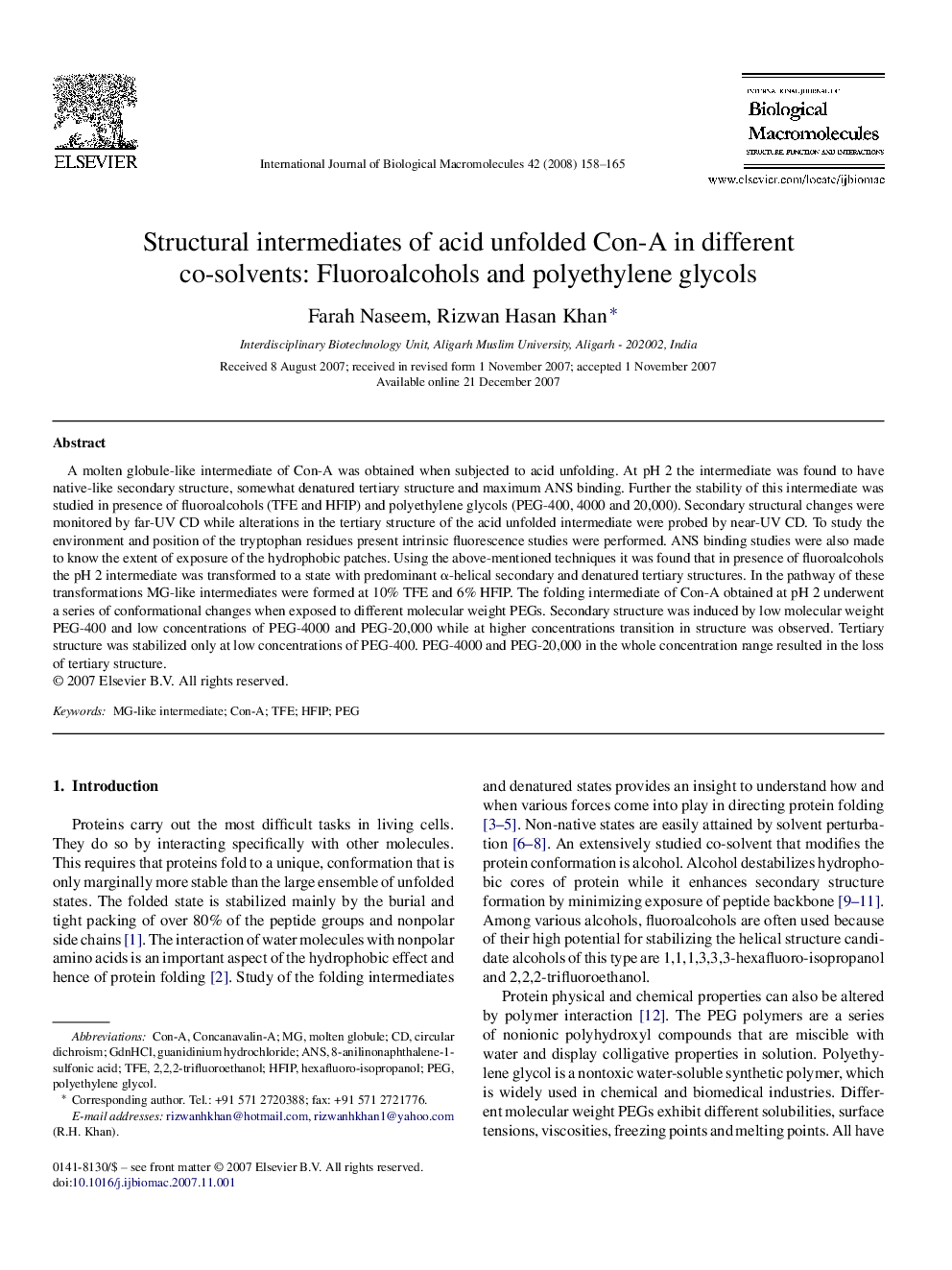| Article ID | Journal | Published Year | Pages | File Type |
|---|---|---|---|---|
| 1987938 | International Journal of Biological Macromolecules | 2008 | 8 Pages |
A molten globule-like intermediate of Con-A was obtained when subjected to acid unfolding. At pH 2 the intermediate was found to have native-like secondary structure, somewhat denatured tertiary structure and maximum ANS binding. Further the stability of this intermediate was studied in presence of fluoroalcohols (TFE and HFIP) and polyethylene glycols (PEG-400, 4000 and 20,000). Secondary structural changes were monitored by far-UV CD while alterations in the tertiary structure of the acid unfolded intermediate were probed by near-UV CD. To study the environment and position of the tryptophan residues present intrinsic fluorescence studies were performed. ANS binding studies were also made to know the extent of exposure of the hydrophobic patches. Using the above-mentioned techniques it was found that in presence of fluoroalcohols the pH 2 intermediate was transformed to a state with predominant α-helical secondary and denatured tertiary structures. In the pathway of these transformations MG-like intermediates were formed at 10% TFE and 6% HFIP. The folding intermediate of Con-A obtained at pH 2 underwent a series of conformational changes when exposed to different molecular weight PEGs. Secondary structure was induced by low molecular weight PEG-400 and low concentrations of PEG-4000 and PEG-20,000 while at higher concentrations transition in structure was observed. Tertiary structure was stabilized only at low concentrations of PEG-400. PEG-4000 and PEG-20,000 in the whole concentration range resulted in the loss of tertiary structure.
